One can only wonder what exactly “1 A e” represents. It is a puzzling phrase that leaves us with more questions than answers. Is it a code? A secret message? Or perhaps just a random combination of letters and numbers? Whatever it may be, “1 A e” remains an enigmatic phrase that continues to intrigue curious minds.

The fourth quarter of 2020.

In the second quarter of 2026.

Fourth quarter of 2027.
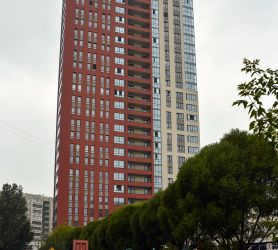
The first quarter of 2021.

First quarter of 2022.

The fourth quarter of 2025.

The second quarter of 2028.
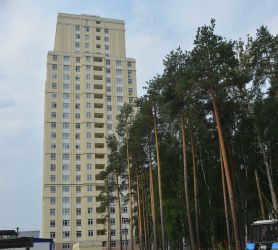
By the first quarter of 2023.

The second quarter of 2025.

By the second quarter of 2025,

The first quarter of 2025.
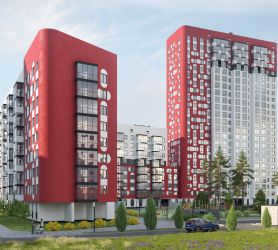
The fourth quarter of 2022.

The first quarter of 2023.

In the fourth quarter of 2022.

The second quarter of 2024.
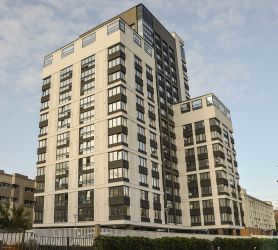
The third quarter of 2020.

In the first quarter of 2023.

February 2nd, 2022.
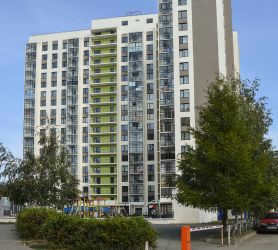
The final quarter of 2020.

First Quarter of 2022.
Publication
All the essential information to gain confidence in the real estate industry
"On December 31st, my dwelling was reduced to ashes." A blogger’s journal documenting the renovation of a burned-down cottage
The year 2023 started with the reconstruction of a three-story cottage in Yekaterinburg for YouTube-blogger HiMan after it was destroyed by fire. The cause of the fire at the cottage on Shirokaya Rechka is still unknown. Andrei Shirgin himself shared the progress made so far and the future plans for the renovation.
“The city’s lungs are gone”: an entire forest in Yekaterinburg was sacrificed to make way for a residential complex
Zhelezno, a federal developer, has made its way into the heart of the Urals capital, and its initial venture has sparked controversy. The company purchased a parcel of land that was nestled within a thriving forest, and immediately began the process of deforestation. This action has caused outrage among the local community, although there are currently no legal measures in place to halt the construction. For more information, refer to the comprehensive report by Cian.Zhurnal.
Turning theory into reality: the universal appeal of the studio apartment
Studio apartments often come with their fair share of challenges: limited space and a perceived lack of suitability for families. However, what if you don’t need those extra square meters that you won’t even use? Maria Piskareva, a sales specialist at TEN Development, the leading developer in the Sverdlovsk region, explains who can benefit from a compact living space.
How a trench mortgage can help families save on their budget
Recent statistics reveal that 20% of young families are reluctant to take on a mortgage loan when purchasing a new property. This hesitance is understandable, as it often requires allocating half of the family’s budget towards mortgage payments. Additionally, there are other essential expenses to consider, such as groceries, utilities, fuel for the car, and personal expenses.
Ekaterinburg received a funding of 90 billion rubles, while St. Petersburg received 37 billion and Novosibirsk received 22.5 billion for the preparation of international tournaments. Omsk, on the other hand, received a funding of 14 billion rubles. However, due to unforeseen circumstances, these tournaments will now be held in other countries, leaving these regions with immense financial burdens. Cian.Zhurnal has compiled a collection of photos and videos showcasing the progress of these projects, most of which are still unfinished, and has investigated what will become of them.
The city’s mass media regularly reports on accidents involving electric scooters: scooters being struck by cars, or scooters colliding with pedestrians. In turn, pedestrians often walk on bicycle lanes, which can be frustrating for cyclists. How can we address the modern conflicts between different road users?
Moscow, Novosibirsk, and Yekaterinburg have the most adventurous travelers
During the long weekend in May, many Russians took the opportunity to explore different parts of the country. Most tourists opted for nearby cities. According to data from the online booking service, Cian, Muscovites were the most frequent travelers, while Novosibirsk, Yekaterinburg, and Krasnodar had the most active tourist populations.
Ivan Dubrovin: “I support the idea of imbuing space with significance”.
Within the heart of Yekaterinburg, one can observe approximately twenty-four sculptures and commemorative markers that hold a special place in Ivan Dubrovin’s heart – all of these masterpieces originated from his own foundry. His rotundas located on Plotinka, the monument dedicated to Vladimir Vysotsky and Marina Vlady, as well as the sculpture titled “Lovers” on Vainer Street, have all become iconic symbols of the city and are featured on every business card representing it.
Ekaterina Shikhova, the co-founder of Dream team event agency, has gained recognition in Ekaterinburg for her role as a blogger and her expertise in organizing large-scale festivals. When the pandemic brought the event industry to a halt, she took the initiative to establish the city’s inaugural Estory food market. We sat down with Ekaterina to delve into the origins of her projects and the evolution of her connection with the city.
The year 2021 witnessed the demolition of the historic Uktus Airport in Yekaterinburg, Russia. This airport, which held a prominent position as one of the oldest in the country, will soon be replaced by a modern shopping center that will also serve as a bus station. Despite efforts to preserve the airport, they ultimately proved futile. However, it is worth noting that Yekaterinburg has seen instances where old houses have been revitalized instead of being torn down.
A collection of housing complexes in Yekaterinburg, previously classified as economy class and now considered standard class, is available from Cian.Zhurnal.
“Cosmos” replacing an industrial zone: Residential Complex at the intersection of four districts with a view of the railway station
The area along Cosmonauts Avenue, stretching from the railway station to Frontovaya Brigades, has historically been occupied by industrial facilities and has never been part of the urban environment. However, in the past three years, developers have started to transform this industrial zone, which is located right next to the city center. One such development is the Cosmos Residential Complex, being constructed by the Riviera Invest Ekaterinburg Group of Companies. This complex consists of five tower buildings, a gated courtyard, elevated parking, and a well-developed transportation network in close proximity.
Yulia Sorokina is the founder of the “Atmosphere” landscape art festival, an event that has taken place in Ekaterinburg for the past three years. This year, the festival transformed 1905 Square, magically turning the old paving stones into a vibrant public garden right next to City Hall in just a few days. The locals were astounded by the sudden transformation, asking themselves, “Could it really be like this?” Yulia firmly believes it can, and she dreams of transforming the entire city into a blossoming garden.
Cian.Zhurnal has curated a collection of residential buildings in our city that evoke memories of the Russian Empire and the merchant history of Yekaterinburg.
Avoiding Demolition and Fraud: A Guide to Trouble-Free Garage Purchases
Cian.Zhurnal has investigated the process of buying a garage without unnecessary risks, identified potential transaction problems, outlined ways to avoid falling victim to fraudsters, and offered tips to safeguard your purchase from potential demolition.
Housing subsidies in the Sverdlovsk region: eligibility criteria and beneficiaries.
Acquiring and building a house is a substantial expense for most Russians, and many rely on loans to improve their living conditions. However, certain individuals are eligible for government aid in the form of subsidies from either the federal or regional budget, or through a preferential mortgage scheme. Cian.Zhurnal has investigated the criteria and conditions for receiving subsidies in the Sverdlovsk region.
In our current era, speed is the ultimate determining factor. In the past, people were satisfied with sending physical letters that could take up to a month or even a year to reach their destination. However, nowadays, we have become accustomed to the convenience of sending digital letters that can be delivered within moments, regardless of the distance. It is difficult for most people to imagine the experience of writing traditional letters and waiting for months for a response, uncertain if it will ever reach the intended recipient. Of course, advancements such as the telegraph and the original internet have significantly expedited the process of transferring various types of data. Yet, even with these innovations, it still took a considerable amount of time compared to today’s standards.
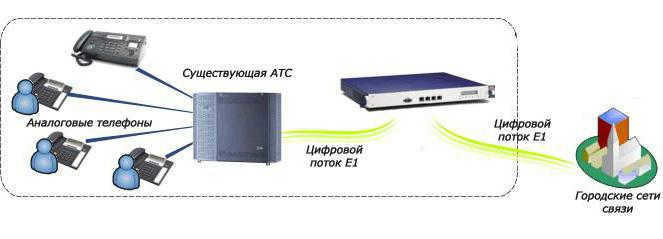
The Definition of E1 Stream
The E1 stream is primarily a standardized method for transmitting digital information, consisting of a multi-channel system with thirty-two individual channels. Thirty of these channels are used for direct transmission, while the remaining two serve as auxiliary (service) streams for synchronization between the sender and receiver. Each of the thirty-two data streams has a bandwidth of sixty-four kilobytes per second, resulting in a total of two thousand forty-eight kilobytes per second or two megabytes when calculated. The E1 stream can be transmitted using either fiber optic or copper lines, utilizing a modem for the transmission process.
The main reason for the high throughput capacity of Digital Stream E1 is that it distributes the transmitted information into frames. These frames are further divided into thirty-two intervals, also known as time-slots, with each interval consisting of 8 bits. The number of time-slots can range from one to thirty-one, depending on the type of stream. Typically, thirty intervals are utilized, while zero and thirty-two are reserved as auxiliary slots.
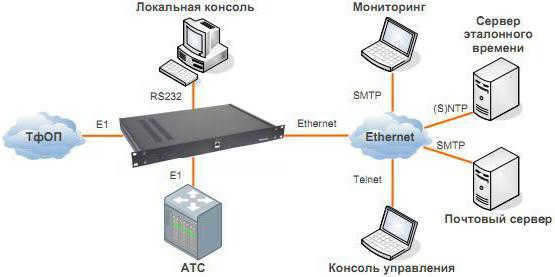
Multiframes
To enhance the amount of valuable data without increasing the bandwidth, clusters of frames known as multiframes are employed. They primarily come in two variations:
- 256N – This type utilizes pairs of one even and one odd frame. It is employed when the user has access to the sixteenth time slot. In this scenario, thirty-one time slots are utilized for transmitting valuable information. (1984 kilobytes per second).
- 256S – In this variation, there are sixteen frames per multiframe, and the sixteenth time slot is used for transmitting end-to-end information. These multiframes are utilized for transmitting voice data. In this mode, the maximum number of timeslots used will be thirty. (1920 kilobytes per second).
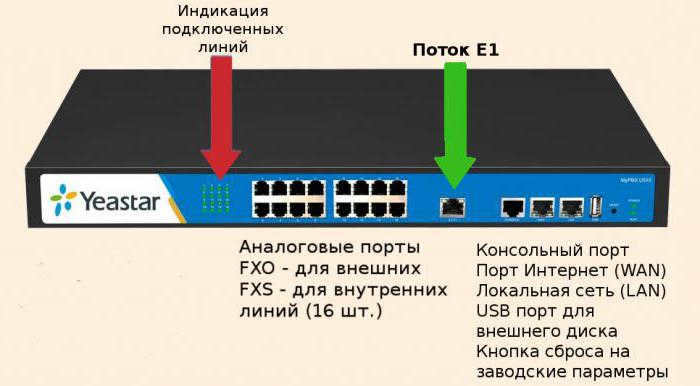
Introduction to Stream Signal
The primary signal of E1 is mainly a digital signal transmitted using a binary code consisting of zeros and ones. E1 utilizes a special modulation called HDB3 for encoding the signal, which is an improved version of the AMI method. In AMI, zeros were transmitted as zero voltages, while units were transmitted as positive or negative pulses. However, this coding method had a significant limitation in transmitting long sequences of zero pulses, as it was unable to transmit a synchronization signal. HDB3 has addressed this limitation by automatically substituting any sequence longer than four zeros with a non-zero signal. This substitution is filtered out at the receiving end through a process known as “Bipolarity Violation,” which recognizes the sequence violation as part of a string of zeros and removes the unwanted signal, thereby restoring the original code.
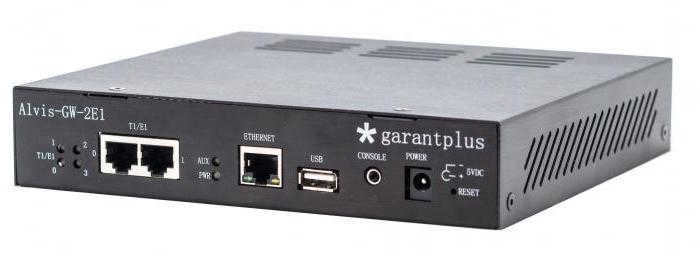
What are the applications of E1 stream?
As evident from the aforementioned information, the E1 stream proves to be an incredibly convenient method for transmitting multichannel information with a consistent bandwidth. This aspect has influenced the future application of this system. The utilization of the E1 stream is most suitable for large corporations that require an internal multichannel telephone or Internet system. With a single physical stream, it is possible to establish thirty high-quality voice/internet channels.
The E1 flow is commonly utilized by both large and small companies that have a strong reliance on telephone communication. This includes call centers, dispatch offices, hotlines, and even some basic office setups. E1 is a versatile tool that can be implemented in various settings.
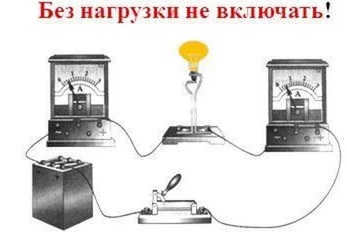
The term “unit of current force” was initially employed by the French mathematician and physicist A. Ampere while replicating experiments on electromagnetic interaction. Later on, from 1881 onwards, when the inaugural International Congress of Electricians took place, Ampere became recognized as the standard unit for measuring current force.
What are the defining characteristics of a current of 1 ampere?
The official definition of the ampere unit was established in 1948 based on a recommendation from the International Committee of Weights and Measures (ICWM). According to this definition, an ampere represents the strength of a direct current that flows through infinitely thin, long, parallel conductors spaced 1 meter apart in a vacuum, resulting in an interaction force of 2 × 10-7 newton for every 1-meter segment.
Since 1992, the standard of ampere in Russia has been determined indirectly using Ohm’s law, resulting in a reduction in the error of the value by two orders of magnitude.
The strength of electric current can be defined as the rate of charge change, meaning that 1 ampere is the quantity of electricity equivalent to 1 coulomb (6.241-10¹⁸ electrons) passing through the cross section of a conductor every second.

What is Ampere’s Law?
The law named after A. M. Ampere not only gave the name to the unit of electric current, but also established a principle that determines the force exerted by a uniform magnetic field on a conductor placed within it. This force is directly proportional to the length of the conductor, the current flowing through it, the magnetic field strength, and the sine of the angle between the magnetic field vector and the direction of the current.
Ampere was the first physicist to study the interaction between two conductors carrying current. The flow of electrons, or electric current, causes either attraction (when the currents flow in the same direction) or repulsion (when the currents flow in opposite directions) between the conductors.
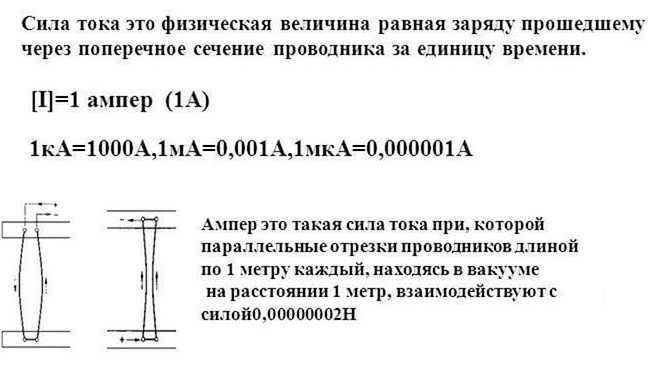
The current’s strength can be estimated by considering the following properties:
– In a lightning channel, the current reaches approximately 500 kiloamperes (1 kA = 10³ A);
– A hundred-watt light bulb uses a current of ≈ 0.5 A when turned on;
– Electrophoresis treatment typically requires a current of around 0.8 mA (1mA = 0.001A);
– The heating element in an electric heater can handle currents up to 10 A.
Every second, the same amount of electricity passes through every section of the conductor in a closed circuit. This means that the current is constant throughout the circuit and is not affected by the thickness of the conductor. Charges do not accumulate in one place, so the current remains the same in all sections of the circuit.
The XXIV SCMV, in October 2011, adopted terms for the future revision of SI system units. This revision includes the redefinition of certain quantities, such as the ampere. The value of the ampere will be affected by the newly defined value of electric charge (e = 1.602 17X-10-19 Kel).
In the future, the ampere will also determine the amperage, but its value will be based on this newly defined number.
ACEA was established in 1995 and is responsible for classifying motor oils by performance properties. This organization consists of major European manufacturers such as BMW, Volkswagen, Daimler-Chrysler, MAN, Porsche, Volvo, Renault, SAAB-Scania, Rolls-Royce, Fiat, RVI, Ford-Europe, Rover, Iveco, DAF, GM-Europe.
Motor oils can be categorized into two groups based on their purpose:
- Passenger vehicles – indicated by letters A, B, C
- The letter Е designates cargo transport.
Passenger vehicles

"A" (A1, A3, and A5) – passenger vehicles that utilize gasoline engines
"B" (BZ, B4, and B5) – low-powered diesel engines found in cars and trucks (vans, minibuses, etc.)
The designations "A" and "B" are used together because most oils nowadays are versatile and not specifically categorized for diesel or gasoline engines.
A1/B1 – Oils designed for use in gasoline engines and light-duty diesel engines, where low-viscosity, high-temperature, high-shear-rate oils that reduce friction may be utilized. However, these oils may not be suitable for lubricating certain engines. It is important to follow the manufacturer’s instructions. This class was discontinued in 2016 due to the introduction of Class C5 (refer to below), but some brands still employ it.
A3/B3 – Oils formulated for usage in high-performance gasoline engines and diesel engines in cars and vans. These oils can be utilized for extended oil change intervals, especially in harsh conditions as specified by the engine manufacturer. This specification is one of the most commonly used.
A3/B4 – Engine oil designed for high-performance gasoline engines and direct injection diesel engines. It can serve as a replacement for A3/B3 oils.
A5/B5 – These are low-viscosity oils designed for use in high-force gasoline engines and diesel engines of light vehicles. They are specifically formulated for extended intervals between oil changes, up to 15,000 km.
“C” – This is a special classification for “low ash” oils that are environmentally friendly. These oils have reduced sulfur, phosphorus, and sulfate ash content, making them suitable for use with catalytic converters and particulate filters.
C2 – Energy-saving lubricants with moderate levels of sulfur, phosphorus, and low levels of sulfate ash. These lubricants are compatible with exhaust gas cleaning systems. They are specifically designed for use in passenger cars’ gasoline and diesel engines that require the use of low-viscosity oils (HTHS > 2.9 mPa*s). These oils help prolong the lifespan of diesel particulate filters (DPF) and three-component catalysts (TWC), while also providing fuel efficiency. However, due to their reduced ash content, they may not be suitable for certain engine types.
C3 – Lubricants with standard viscosity and moderate levels of sulfur, phosphorus, and low levels of sulfate ash. These lubricants are compatible with exhaust gas cleaning systems. They are designed for use in gasoline engines and diesel engines of light vehicles. However, these oils may not be suitable for use in certain engines.
C4 – These are stable viscosity oils that have low levels of sulfur, phosphorus, and sulfate ash content, also known as “low ash” oils. They are specifically designed to be compatible with exhaust aftertreatment systems and are intended for use in both gasoline engines and light vehicle diesel engines. This oil category was initially introduced in the 2008 edition and is known for having the strictest requirements in terms of evaporability (less than 11%), sulfur content (less than 0.2%), and sulfate ash content (less than 0.5%). The use of these oils helps to extend the lifespan of diesel particulate filters (DPF) and three-part catalysts (TWC). However, it is important to note that they may not be suitable for use in certain types of engines.
C5 – This oil category was introduced in 2016 and is known for its low viscosity, low levels of sulfur, phosphorus, and sulfate ash content. It is primarily applicable to engine oils with a viscosity of 0W-20 and 5W-20. C5 oils are classified as energy-saving oils.
Vehicle

E – Engine oils for heavy-duty diesel engines.
E4 – Engine oils designed for high-speed diesel engines in trucks that meet the requirements of EURO 1-5 and operate under extremely harsh conditions. These oils ensure excellent piston cleanliness, reduced wear, and minimized soot formation. They are suitable for engines that do not have diesel particulate filters (DPF) and for certain engines equipped with EGR and SCR.
E6 – Engine oils specifically formulated for EURO 1-6 compliant high-speed truck diesel engines that operate under extremely severe conditions. These oils provide excellent piston cleanliness, reduced wear, and minimized soot formation. They are recommended for engines equipped with diesel particulate filters (DPF) and that run on low sulfur fuel.
E7 – Oils offer enhanced protection against wear and soot formation while maintaining stable lubricating properties. These oils are highly recommended for usage in high-speed diesel engines that meet EURO 1-5 standards and are designed for regular replacement intervals. They are suitable for engines that do not have diesel particulate filters (DPF), as well as for the majority of engines equipped with exhaust gas recirculation (EGR) and selective catalytic reduction (SCR).
Therefore, it can be deduced that:
E7, E9 – Intended for the standard interval for changing oil (approximately 20,000 kilometers)
E4, E6 – Calculated interval for changing oil (approximately 30 – 45 thousand km)
All standard or extended change intervals have “approximate” values. Some tolerances of truck manufacturers, such as MB 228.51, prescribe an extended replacement interval of up to 120,000 km. For Russian operating conditions, this value is usually divided by 2 – that is, 60,000 km
If your car is equipped with functioning ecological systems (EGR, SCR, DPF, etc.), it is necessary to use oils with the following classification E6 or E9





